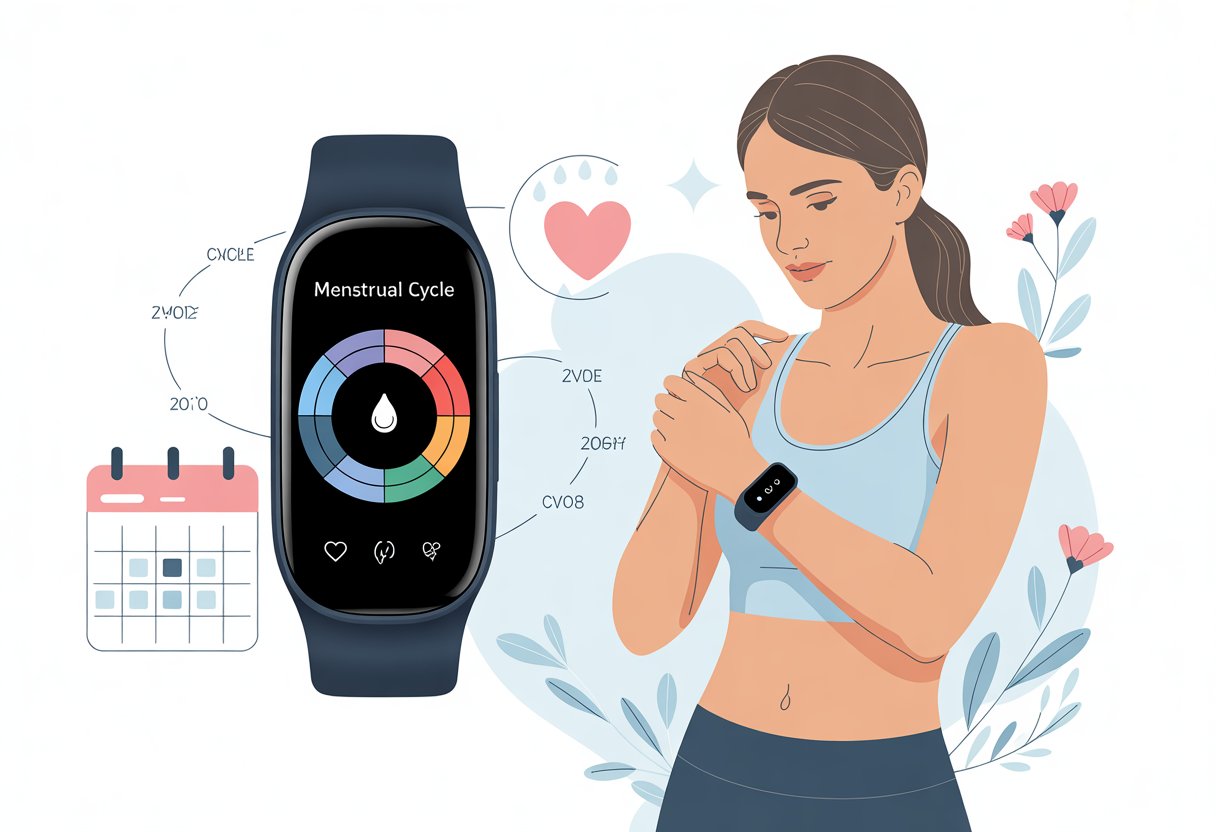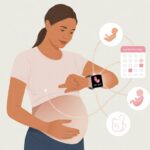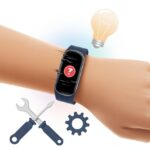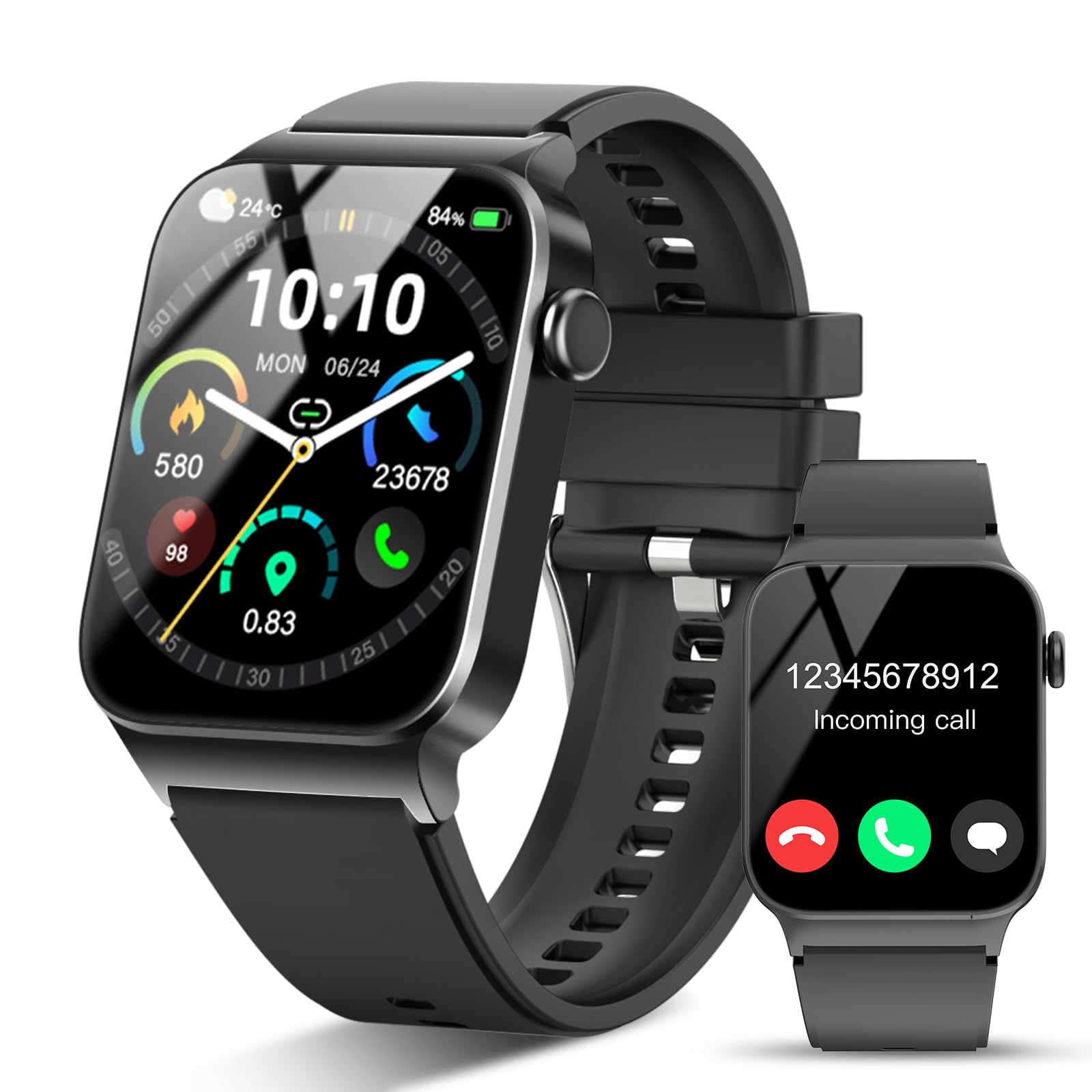Let’s be honest, tracking our menstrual cycles isn’t anyone’s favorite hobby. But hey, fitness trackers have made it way easier—and definitely less messy than scribbling on old calendars. With a fitness tracker on our wrist, we can log period dates, symptoms, and get reminders, all while pretending we’re undercover agents for women’s health. No more awkward moments trying to remember when our last period started.

We can use smartwatches or fitness trackers—think Apple Watch, Garmin, Fitbit, or Samsung—to keep tabs on our cycles right alongside steps, heart rate, and sleep. Some, like the Cycle Tracking app on Apple Watch, let us log everything from our wrist. Suddenly, “checking in with our bodies” is easier than remembering to charge our phone.
Menstrual cycle tracking isn’t just about knowing when to pack extra pads. It helps us spot patterns in how we feel, watch our health, and maybe figure out why we cry at random commercials. Honestly, the more we know about our bodies, the easier it gets to take care of ourselves—and maybe laugh about it too.
Why Track Your Menstrual Cycle With a Fitness Tracker?
When we use a fitness tracker for our menstrual cycle, we get more than just a calendar with red dots. We start to notice patterns, track symptoms, and maybe avoid those surprise moments in public (no one loves the “sweater around the waist” look).
Top Benefits for Reproductive and Overall Health
Fitness trackers make us feel like health detectives, logging every little symptom. When we track periods and symptoms, we notice changes in our cycle early. This comes in handy if our flow gets heavy or cycles go wonky.
Knowing when cramps are coming gives us time to stock up on chocolate and heating pads. And honestly, having real data for our doctors beats saying, “Umm, I think it’s kind of regular?” That’s pretty cool.
With a smartwatch, we can log sleep, stress, and exercise too. These things affect our menstrual health, and it’s easier to spot patterns when everything’s in one place. Plus, we get to brag about our charting skills. For more details, check out how tracking your menstrual cycle can help us understand our bodies.
Supporting Fertility and Trying to Conceive
Trying to remember the last time we ovulated shouldn’t feel like a pop quiz. Fitness trackers predict our fertile windows based on past cycles. These predictions help us time things right if we want to grow our family—or avoid surprises.
We can log things like basal body temperature or cervical fluid, turning our tracker into a mini fertility assistant. This data gives doctors better info and makes “trying” less of a guessing game. Logging details might sound boring, but it’s way easier on a tiny screen than sticky notes.
If we’re trying to conceive, seeing ovulation patterns and cycle changes shows us our most fertile days. That way, we can plan (or not plan) our next moves with a little more confidence.
Menstrual Health Insights
With a fitness tracker, we’re not left wondering, “Was my period late last month, or did I just eat too many pickles?” By logging symptoms like cramps, moods, and spotting, we pick up on trends over months. Less guesswork means more time for, well, cat videos.
Our tracker helps us notice if our cycle gets shorter or longer, so if something’s off, we catch it early and talk to our doctor. Many trackers let us set reminders for when our period’s about to start or end. These nudges keep us from being caught off guard.
Some smartwatches even let us track sleep and heart rate, painting a fuller picture of our health. Menstrual data can flag stress or illness before we notice. You can learn more about tracking your period and understanding your cycle on the go.
Getting Started With Menstrual Cycle Tracking
Period tracking on a fitness tracker is about staying informed, not stressing out. We just need a tracker that’s up to the job, a simple setup, and an app that doesn’t lose our info faster than we lose bobby pins.
Choosing the Right Fitness Tracker
Let’s start with the tracker. Not every device on our wrist is built for period tracking. Some, like Fitbit and Apple Watch, come with cycle tracking features. Others need third-party apps, which can be a bit of a pain.
If period tracker tools matter to us, we should check the product specs. Does it have a built-in period tracking app? Can we log symptoms and get reminders? We shouldn’t settle for something that just counts steps. For example, the Apple Watch uses its own Cycle Tracking app, and Fitbit includes cycle logging in its app.
Let’s talk comfort, too. We want a tracker that doesn’t dig into our wrists at night. Battery life matters, especially if we forget to charge things. Smart features are great, but if our tracker always needs charging, we might miss important days.
Setting Up Period Tracking Features
Once we’ve picked our gadget, it’s setup time. Usually, we open the device’s app and look for period tracking or “Women’s Health”—unless the app tries to hide it.
On Apple Watch, we use the Cycle Tracking app and tap to log a period. Fitbit has us open the Fitbit app and use “Health & Fitness Stats” to log everything from cramps to cravings. Garmin users open Garmin Connect, go to Health Stats, and set up menstrual cycle tracking—no medical degree needed.
If privacy worries us, most brands promise to keep our data secure. We can adjust reminders so we remember to log things. No more “Wait, was that last week or last month?”
Syncing With Apps Like Fitbit and Garmin Connect
Logging our period on the tracker isn’t enough. We want our symptoms, moods, and cravings to sync across all our devices—so syncing matters. Fitbit syncs period data with its app, letting us check cycle details on our phone or desktop if we’re feeling a little old-school.
For Garmin, we use the Garmin Connect app’s Menstrual Cycle section to edit, track, and review everything. This includes helpful charts and predictions—like a weather report for our moods.
Not every device works with every app. Apple and Garmin mostly stick to their own platforms, while Fitbit is a bit more flexible. We just sign in, link the app, and as long as Bluetooth is on, our phone and tracker become best buds. If only syncing our real-life schedules was this easy.
Inputting and Managing Menstrual Data
We don’t need psychic powers to track our cycle—just a bit of organization. A fitness tracker helps us keep tabs on period dates, ovulation, possible fertile windows, and those random symptoms that show up.
Logging Period Start and End Dates
Let’s start simple: entering our period dates. Most trackers have a menstrual cycle tracking feature. On Apple Watch, we tap the Cycle Tracking app, pick the date, and log our period. With Garmin, we open the app, jump into the Menstrual Cycle section, and get our dates in—like a digital diary that actually remembers.
If we’re forgetful, most trackers let us set reminders so we don’t lose track. Once we record start and end dates, our tracker maps out the next cycle. It’s the least embarrassing period calendar ever and helps us see patterns over time. We just need to update regularly and not let laziness win (we see you, Monday mornings).
Updating Ovulation Days and Fertility Predictions
Next up is ovulation—the time of the month when our eggs get busy. Fitness trackers estimate this window based on our logged period data, but we can help by adding details like body temperature, cervical fluid, or even epic mood swings. Garmin Connect and others make logging ovulation details easy, which helps with more accurate fertility predictions.
This is super useful for anyone trying to get pregnant, avoid it, or just wants to know when to hide the chocolate. Trackers often show a fertile window on our calendar with color codes, icons, or even egg emojis. Staying consistent helps us get the most accurate predictions—and maybe fewer surprises.
Tracking PMS, PMDD, and Physical Symptoms
Sometimes our symptoms steal the show. PMS and PMDD (the “PMS but make it dramatic” version) can bring headaches, mood swings, bloating, and more. Most trackers let us pick common symptoms from a checklist or jot notes about how we’re feeling.
We can track physical symptoms like cramps, back pain, and skin changes. By tracking, we spot patterns—like “wow, we always want to nap on day 23”—and show our provider a timeline if things get weird. It’s like having a personal assistant who doesn’t judge our snack choices. If we log consistently, our tracker becomes our go-to for understanding what’s normal for us (and what’s just being dramatic).
Analyzing Cycle Trends and Health Stats
Fitness trackers help us connect the dots between our cycle, daily moods, and health stats. Recording just a little data can reveal surprising patterns about our bodies.
Visualizing Menstrual Patterns
When we use fitness trackers or apps to track periods, we ditch sticky notes and wild guessing for graphs, calendars, and visual tools. It’s like getting a front-row seat to our hormonal roller coaster, but with less confusion.
Charts and color-coded calendars show which days are period days, fertile windows, or when to expect mood dips or cramps. Planning gets a bit easier—like knowing when we might want chocolate or an extra nap. Some trackers even split the cycle into phases like follicular and luteal, which helps us predict symptoms more accurately. Tools like Cycle Insights break this down clearly, making things less mysterious.
Custom alerts or reminders can warn us when our period is on the way, saving us from surprises. If only they could remind us where we put our keys, too.
Linking Menstrual Data With Sleep, Stress, and Energy Level
Tracking our period isn’t just about remembering to toss supplies in our bags. Fitness trackers these days also keep an eye on sleep quality, steps, and even stress or energy levels.
By logging menstrual data, we can actually see how our cycle matches up with all these stats. Maybe our sleep tanks right before or during our period. Or maybe energy levels just drop off a cliff when cramps hit.
With all this data, we can tweak workouts, prioritize rest, or just decide today calls for extra snacks. Devices like WHOOP offer menstrual cycle insights that factor cycle info into sleep and training advice, which means less guessing for us.
When we see these links, it’s easier to spot trends—like, does stress totally mess with our cycles? It’s basically our own science experiment, just minus the goggles.
Spotting Changes: Menopause and Perimenopause
Menstrual tracking isn’t just for teenagers or people in their twenties. As we hit perimenopause or menopause, periods can get wild—late, early, short, long, or sometimes all at once.
A tracker makes these changes stand out. Sudden shifts, missed periods, or weird new symptoms show up in the logs.
This info comes in handy when talking to doctors, who honestly love a good chart. Tracking also helps us watch health stats like sleep, stress, and energy, which can get weird during perimenopause.
Seeing all these changes in one place makes it easier to decide if we just want to vent, or if it’s time to check in with a health professional. At least the tracker won’t roll its eyes when we google “Is this normal?” at 2 a.m.
Optimizing Fitness and Nutrition Based on Your Cycle
When we use a fitness tracker for our menstrual cycle, we can actually plan smarter workouts and meals. Our bodies don’t run on the same settings every day, and sometimes our best performance depends on what’s happening in our cycle.
Adjusting Your Workouts for Each Phase
Let’s be real—not every day feels like a fitness win. Here’s how we can tweak our workouts for each phase, so we make the most of our good days and just survive the sluggish ones:
Follicular Phase (Period ending – ovulation):
- We usually have more energy, so it’s a great time for cardio, lifting, and trying new stuff.
- Performance often improves, and recovery is faster.
- This is our body’s “turbo mode,” honestly.
Ovulation:
- Strength typically peaks (personal bests, anyone?).
- This is prime time for tough workouts—HIIT, sprints, heavy lifting.
- Coordination can dip a bit, so maybe skip the parkour class.
Luteal Phase (after ovulation – before period starts):
- Energy drops and cramps might start creeping in.
- It’s a good time for moderate activities like yoga, swimming, or walking.
- Our tracker can remind us it’s totally fine to take it easy.
Check out more on syncing workouts with your cycle at Healthline’s guide to cycle syncing.
Tailoring Nutrition Information and Goals
Tweaking our nutrition during different phases can really boost energy and mood. Fitness trackers help us spot patterns—like when snacks become a food group or when salads suddenly sound good.
During the follicular and ovulation phases:
- It helps to get more protein, complex carbs, and veggies.
- We can handle bigger meals since metabolism speeds up and appetite might be lighter.
In the luteal phase:
- Comfort food cravings? Totally normal. We might need extra magnesium and B vitamins (bananas, whole grains, nuts).
- Focusing on iron-rich foods helps prep for the next period.
We should use our tracker to log cravings, meals, and symptoms. That way, we can spot nutrition gaps and adjust goals for better performance and health. If you want more details, check out Cycle Syncing Workouts and Diet.
Maximizing Notifications and Reminders
Let’s be honest—life’s busy, and our brains drop the ball sometimes. Fitness trackers can step in as that friendly nag, keeping us on track with timely nudges.
Setting Up Custom Notifications
We’ve all forgotten to log a period or missed a cycle update. Most fitness trackers let us set custom notifications, so we don’t have to rely on memory.
On the Apple Watch, we can use the Cycle Tracking app to set notifications for upcoming periods, fertile windows, and symptoms. That gentle wrist buzz reminds us to log flow, moods, or cramps—because who doesn’t love a random cramp update?
Most trackers let us pick the time and frequency for reminders. Daily alerts? Sure, if our cycle is being especially mysterious.
These reminders take the guesswork out of tracking. Our trackers turn into accountability buddies—minus the judgment.
Using Reminders for Birth Control and Sex Drive Tracking
Remembering birth control can be as tricky as finding matching socks. Thankfully, most health apps let us schedule reminders for pills or other methods.
We can set these to ping us at the same time every day, so no more drama about forgetting. Some trackers even support reminders to log sexual activity.
This helps us keep tabs on days that might affect mood, energy, or symptoms. Tracking sex drive over time can reveal patterns—or, let’s be real, dry spells.
Apps like Flo let us log days when we felt more or less interested in intimacy. Using tracker reminders for these habits makes it less awkward and more routine—almost as easy as charging the thing.
Combining Activity Tracking With Menstrual Health
When we track fitness alongside our menstrual cycle, we get a clearer picture of how our bodies act each month. Activity data like steps, heart rate, or weight isn’t just numbers—it helps us understand trends and make smarter choices.
Tracking Steps Taken and Calories Burned
Some days we’re running marathons, and other days walking to the fridge feels like a win. Tracking our steps and calories burned shows us how active we are across the cycle.
Fitness trackers log every step, and most estimate calories burned based on movement and heart rate. Before our period, we might have less energy. If our step count drops, that’s normal.
Looking at step charts over time helps us spot patterns. Maybe we’re more active during certain weeks, and that’s totally fine.
It’s also satisfying to see the numbers add up, even if our “walk” was just a snack run.
Monitoring Heart Rate Fluctuations
Heart rate isn’t just for athletes. Our menstrual cycles can nudge heart rate up or down depending on the phase.
For example, many of us notice a slight increase in resting heart rate as our period gets closer. Knowing this helps us avoid panicking over small changes.
Our fitness tracker usually displays this info in simple graphs. Want to see if a sudden spike matches cramps or crankiness? Logging both in our tracker gives us answers.
This way, we’re not just guessing—we’re actually connecting the dots.
Evaluating Weight Changes and Physical Symptoms
Weight can feel like a roller coaster, especially during our cycles. Fitness trackers let us see these changes in real time, so those “did I gain three pounds overnight?” moments are less mysterious.
It’s normal for weight to go up before our period, usually because of water retention. We can track other symptoms like bloating or headaches right in the app.
Many trackers let us add notes, so we can record feeling sluggish or eating a whole pizza (no shame). When we look at these logs next to our weight changes, things start to make sense.
All this data makes it easier to spot trends and decide when to change up routines or just cut ourselves some slack.
For setup help, check out tracking cycles on a Fitbit or Apple Watch.
Integrating Your Fitness Tracker With Women’s Health Apps
When we link our fitness trackers to women’s health apps, period tracking gets a whole lot easier (and sometimes, more fun). Sending our data to different platforms helps us spot new patterns—or just export it if we want to geek out over charts.
Connecting With Apps Like eve
If we’re using a fitness tracker and want to track periods or symptoms, apps like eve can be a lifesaver—not just because of the cute emojis. Connecting the two is usually simple: download eve, then follow the steps to sync it with devices like Fitbit or Garmin.
Most modern fitness trackers have their own health apps, but they often let us share or import data to more specialized apps. For example, the Fitbit app can send steps and sleep info right into eve, so we can see if PMS cravings hit harder after a long run.
Here’s what we usually do:
- Open the health app for our tracker
- Find “Apps & Devices” or “Connections”
- Choose eve from the list
- Confirm what info we want to sync (do we really want to share how many steps we took during cramps?)
- Relax and let the syncing happen
We can keep using our usual fitness app while the period tracker works in the background.
Syncing and Exporting Menstrual Data
Syncing menstrual data means our steps, heart rate, and sleep stats show up with our period logs. Science has never felt so personal.
Many trackers and period apps give us charts or “insights” that reveal trends, like always losing sleep during the luteal phase. Exporting our data helps when we want to take things further.
Most women’s health apps, including Garmin’s women’s health features, let us export period data as CSV files. We can share this info with a doctor or just analyze it ourselves.
Not every tracker or app syncs perfectly—sometimes we have to play tech matchmaker. But once it’s set up, our tracker and period app can be best friends, and we finally get to see if “leg day” really lines up with “why am I so cranky right now?”
Understanding Privacy and Data Security
Using a fitness tracker for menstrual cycle tracking means we’re handing over some very personal health info. Protecting this data and knowing how it’s used matters just as much as counting steps.
Protecting Your Menstrual and Health Information
Menstrual data isn’t just numbers on a chart. It’s personal stuff about our bodies and health.
When we track periods, symptoms, or even what we eat, we’re putting a lot of trust in these apps. We hope they don’t spill our secrets to the world—or, honestly, to ad companies.
A lot of fitness trackers and apps just aren’t as private as we’d like. Sometimes, they grab more data than they need or store it in ways that don’t feel super secure.
Some apps even share info with third parties. That’s not just paranoia talking—some apps lack strong rules to protect our info, and menstrual data could end up as evidence in court if we’re not careful.
If you want to keep things private, try picking period tracking apps with clear privacy policies. Look for ones that let you set up passwords or use biometric locks.
And don’t forget: leaving your phone unlocked is pretty much like leaving your diary open in the cafeteria.
Quick privacy tips:
- Set up a password or use a fingerprint lock.
- Don’t use your full name or real email if the app doesn’t really need it.
- Skim the privacy policies so you’re not caught off guard later.
If you want to dig deeper, check out Consumer Reports’ look at period tracker privacy and see what Kaspersky says about fitness tracker privacy.
Managing Data Sharing Settings
Let’s be honest: we all love data, but that doesn’t mean we want to share it with the whole world. Most apps actually let us decide how much of our health and nutrition info gets out there.
Sometimes those settings pop right up, but other times, finding them feels like searching for a missing sock. (Seriously, where do they go?)
First things first—open the “Settings” menu in your fitness tracker or app. You’ll usually spot options to turn off data sharing with third parties or advertisers.
Don’t forget about location sharing. Turning that off feels like a small victory—nobody needs to broadcast your period across town.
A lot of apps let you export or delete your info if you’re switching to something new. If you ever get uneasy about where your tracking data ends up, go ahead and use those features.
And hey, if you’re really done, deleting your account instead of just uninstalling the app is honestly the way to go. It’s like actually washing your bowl instead of leaving it in the sink for someone else.
Not sure exactly what your app shares or who gets it? Go ahead and ask the company, or just do a little digging online.
After all, it’s your personal life. Shouldn’t they at least have to send you a postcard before sharing it?
If you want more tips, Consumer Reports’ advice on period tracker privacy is worth a look.
- Why is my fitness tracker not showing Instagram notifications? Is It On a Social Media Detox? - November 24, 2025
- Why do my Bluetooth headphones not connect to multiple devices? The Sad Tale of Gadget Jealousy - November 23, 2025
- Smartwatch Error Code 4001 Fix: Why Your Wrist Wants a Timeout - November 23, 2025






